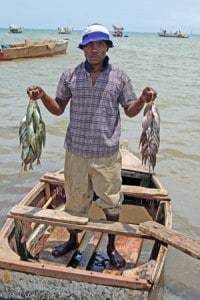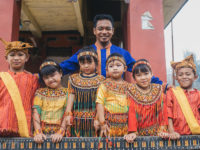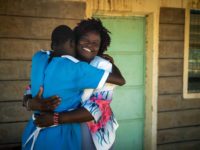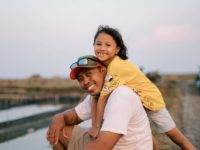Bagamoyo is a well-known place with a population of 228,967, located on the east coast of Tanzania facing the Indian Ocean. One of the things that mark the town of Bagamoyo is its famous slave trade history, which reached its climax at the end of the 19th century and the beginning of the 20th century.
Culture
This area’s culture has been affected by the Arabs and the slave trade. Bagamoyo played a major role as a terminal for slaves who were captured from the mainland, shipped to Zanzibar’s major slave market, and subsequently sold to Arab countries and the Middle East.
Generally, people of Bagamoyo and the coast do not put much weight in work, as they associate hard work with slavery. After the abolition of the slave trade, this association developed and has contributed to the low economic level of the people. People of the coast love dancing and long parties.

A church used by the Catholic community in Bagamoyo
The slave trade was carried out for several centuries between the coast and the mainland, and this contributed much to the changing culture of Bagamoyo’s people. In Bagamoyo there are two types of people: descendants of slave owners and descendants of slaves. Agreeing or settling upon a marriage can be problematic if one of the spouses is from slavery lineage and the other is not.
Economic Activities
Subsistence farming and fishing are the major economic activities of the people of Bagamoyo. They grow rice, cassava and maize, but on a small scale.
People are involved in fishing and selling seashells to tourists who visit the town to learn about the historic slave trade.
Food Crisis Update
Bagamoyo and the coastal area in general have not been spared the escalation of food prices that has hit many areas in Tanzania. Insufficient rainfall during the last two farming seasons has resulted in a shortage in food harvested.
Bagamoyo is directly linked to Dar es Salaam, and any food fluctuation that has hit Dar es Salaam over the past two years has hit Bagamoyo also.
Families have had to adjust their meals when they cannot afford to buy what they used to buy previously. However, no child in our Child Sponsorship Program has gone hungry, and each child development center makes sure that at least every Saturday, the program day, the children get a balanced diet.
Local Issues
The cases of HIV/AIDS here have increased. With Dar es Salaam’s infection rate of 8.9 percent, well above the national rate of 5.8 percent, the influence and impact of this big city of more than 4 million people is directly felt in Bagamoyo, which is 66 kilometers away. Apart from HIV/AIDS, other common diseases are malaria and bilharzia (another parasitic disease).

Home Life
Most of the indigenous people have their houses built under the many mango trees planted in the area, typical to the Arab slave trade route. The houses are built with mud/soil and thatched roofs.
Schools and Education
There are several primary schools in Bagamoyo but, like many places in Tanzania, the schools lack enough teaching facilities. This makes the level of education low, and most primary school graduates do not go beyond that level. Young people are satisfied to engage in fishing.
Church and Religion
The church in Bagamoyo is still weak and needs to be empowered to make its presence felt in this Islamic-dominated area (more than 90 percent). However, the area is acquiring new churches as the result of a wave of revival in East Africa.
Since certain Muslim groups practice polygamous marriage, some women get married several times, and this increases the rate of child departures within Compassion-assisted centers.







4 Comments |Add a comment
I remember this place with great fondness as I visited my compassion child there. It really brought home that we can and do make a difference!
Our child is in Bagamoyo and I’ve learned so much more about the area.
Thanks you!!
I visited my child at a compassion centre here and it really makes you realise that we can and do make a difference!
Thanks for sharing this! One of my correspondence children is in Bagamoyo so it’s great to learn more about that area!